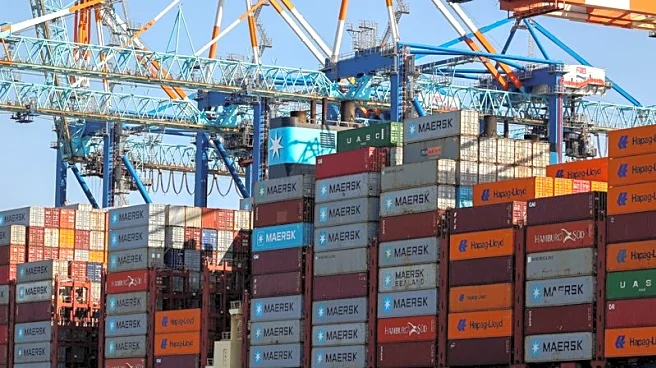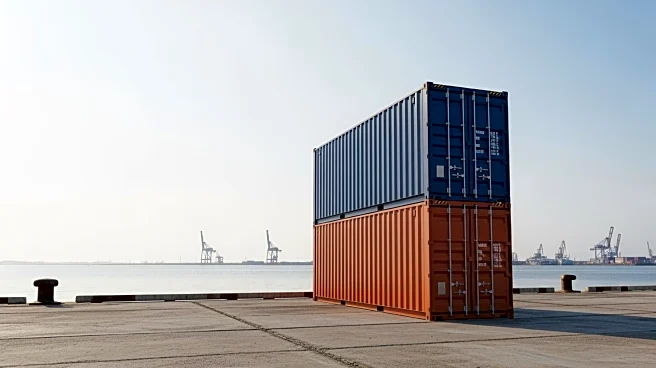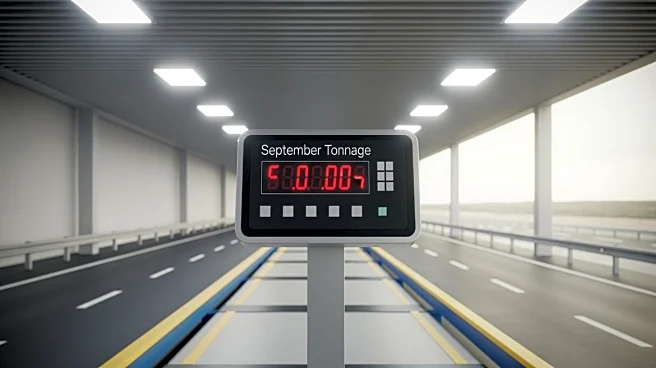What's Happening?
The latest Trucking Conditions Index from freight transportation consultancy FTR indicates modest improvements in the U.S. trucking industry. The index, which tracks changes in freight volumes, freight rates, fleet capacity, fuel prices, and financing
costs, showed a reading of 0.3 for August, marking an improvement from July's -1.03. This suggests a neutral operating environment, as readings above zero indicate adequate conditions, while those above 10 suggest favorable conditions for carriers. The improvement was driven by less challenging freight rates and positive utilization factors, although not at strong levels. FTR forecasts improved market conditions in 2026 and 2027, with potential recovery driven by capacity constraints due to restrictions on commercial driver's licenses for foreign drivers.
Why It's Important?
The modest gains in the Trucking Conditions Index are significant for the U.S. trucking industry, which is a critical component of the national supply chain. The neutral reading suggests stability, but not yet robust growth, which impacts carriers' pricing power and operational margins. The potential recovery driven by capacity constraints could lead to increased demand for domestic drivers, affecting employment and training programs. Additionally, the enforcement of stricter regulations on foreign drivers could reshape the labor market, influencing fleet operations and logistics strategies. Stakeholders in the industry, including carriers and logistics providers, must navigate these changes to optimize their operations and maintain competitiveness.
What's Next?
FTR anticipates that the trucking market will continue to experience pressure from capacity constraints due to regulatory changes affecting foreign drivers. This could lead to shifts in hiring practices and increased demand for domestic drivers. The industry may also see adjustments in freight rates and operational strategies as companies adapt to the evolving market conditions. Stakeholders will need to monitor regulatory developments and their impact on the trucking sector closely. The forecast for improved conditions in 2026 and 2027 suggests that companies should prepare for potential growth opportunities while addressing current challenges.
Beyond the Headlines
The enforcement of stricter regulations on commercial driver's licenses for foreign drivers raises ethical and legal considerations regarding labor rights and immigration policies. The trucking industry may face scrutiny over its reliance on immigrant labor and the implications of regulatory changes on workforce diversity. Long-term shifts in the labor market could influence cultural dynamics within the industry, as companies adapt to a changing workforce. These developments may also prompt discussions on the balance between regulatory compliance and fair labor practices.














